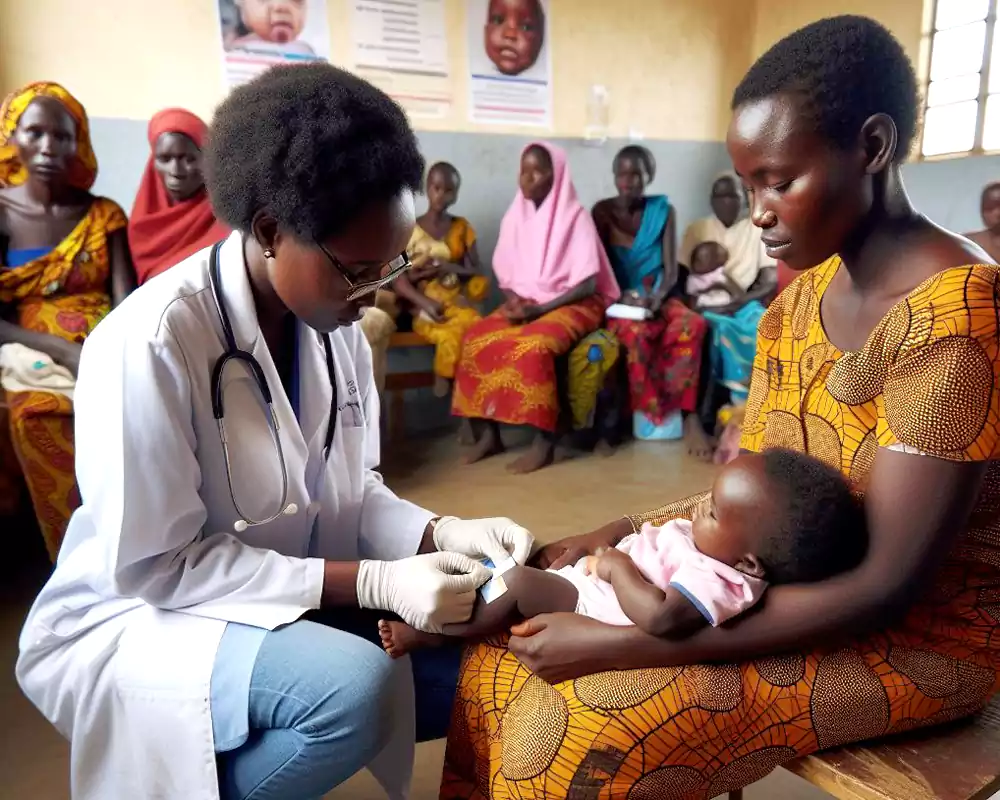
Health and Nutrition in Crisis: South Sudan’s Struggle to Heal
South Sudan faces a staggering health and nutrition crisis that robs countless people of their well-being. Access to even the most basic package of health and nutrition services remains an elusive dream for many, with tragic consequences for children, mothers, and families. Let’s examine the challenges, the impact, and urgent solutions needed to improve the lives of millions.
South Sudan Health Global Ranking
South Sudan consistently ranks among the countries with the worst health indicators worldwide. Data and rankings can be found on:
-
- Global Health Security Index: https://ghsindex.org/country/south-sudan/
- WHO Global Health Observatory: https://www.who.int/data/gho
How Much Does South Sudan Government Spend on Health?
South Sudan’s health expenditure is a small portion of its national budget, often far below what is recommended by international organizations like the World Health Organization (WHO). Explore the WHO’s data on South Sudan here (https://apps.who.int/nha/database).
The South Sudanese Access to Health Services Statistics
Less than half the population has access to even the most basic package of health and nutrition services (HNO 2023/2024). Rural communities are particularly underserved.
UNICEF South Sudan: Offers data on vaccination rates, skilled birth attendance, and child nutrition (https://www.unicef.org/southsudan/what-we-do/health)
Challenges Facing Health and Nutrition
- Conflict and Displacement: Ongoing violence disrupts health systems, displaces communities, and makes service delivery nearly impossible in some areas.
- Lack of Infrastructure: Many areas lack clinics, clean water, and sanitation facilities, creating an environment where disease thrives.
- Shortage of Health Workers: South Sudan has a critical shortage of doctors, nurses, and community health workers.
- Poverty: Families who can’t afford basic necessities often can’t afford healthcare either.
South Sudan Health and Nutrition Contribution to Poverty
Disease and malnutrition trap families in poverty. Illness drains resources, prevents adults from working, and keeps children out of school.
WHO: Health as Investment: Resources on the economic impact of health emphasize the longer-term damage to South Sudan’s development if these issues are not addressed.
Interventions to Improve Health and Nutrition by Stakeholders in South Sudan
- Government Commitment: Increasing and prioritizing health and nutrition spending.
- NGO Support: Organizations like UNICEF and USAID provide critical care, nutrition support, and health education.
- Community-Based Health Initiatives: The Wonderland Development Agency community health workers training community members in basic health interventions extends healthcare’s reach.
How to Improve Health and Nutrition in South Sudan + Case Studies
TO improve the SOuth Sudan halth and Nutriiton services, we need to borrow form best case studies to avoid reinventing the wheel. Such best case studies can be borrowed from:
- Afghanistan: Look beyond traditional brick-and-mortar clinics and explore how Afghanistan has successfully implemented mobile health clinics to deliver essential health services to remote communities. These mobile clinics, often staffed by nurses and community health workers, can reach geographically isolated populations and provide critical services like vaccinations, prenatal care, and basic treatment for common illnesses.
- The Democratic Republic of Congo (DRC): Malnutrition is a major concern in South Sudan, and the DRC offers valuable lessons in community-based treatment programs. The DRC has piloted programs that train mothers and caregivers on how to identify and treat malnutrition in children. These programs empower communities to take charge of their own health and well-being, while reducing the strain on overwhelmed health facilities.
Providing a basic package of health and nutrition services in South Sudan is a monumental task, riddled with challenges. But it’s not impossible. With a strong commitment from the government, international support, and by drawing inspiration from successful models, South Sudan can start turning this crisis around – one healthier child, one stronger community at a time.



